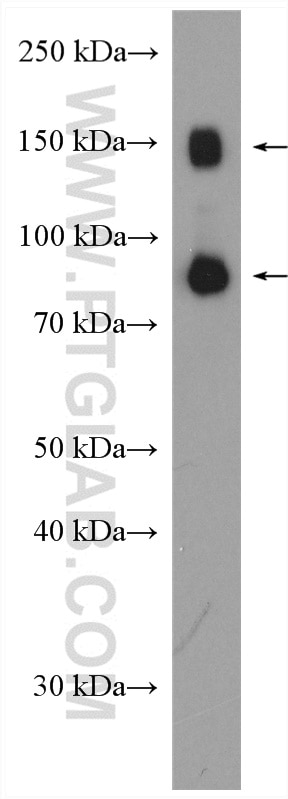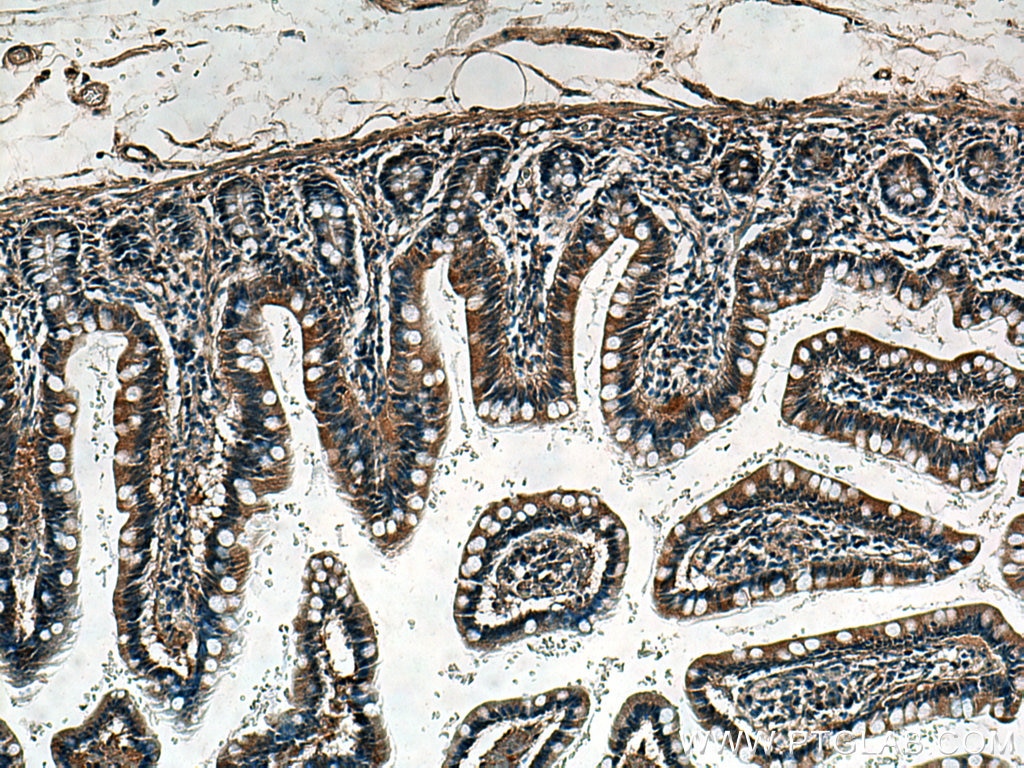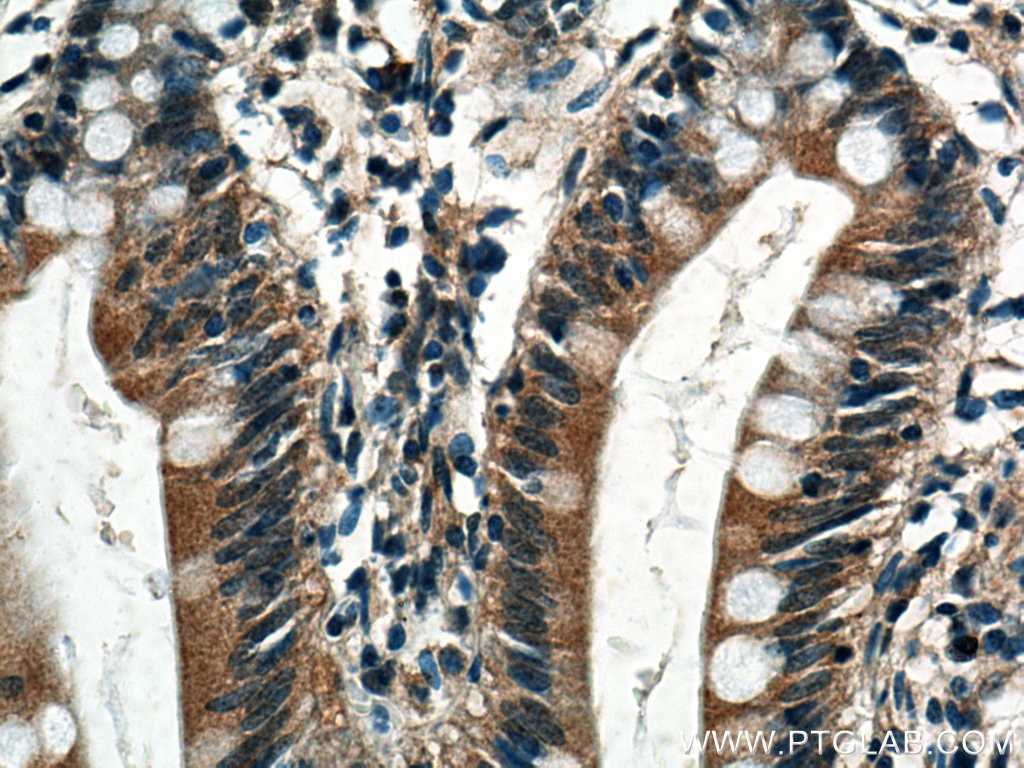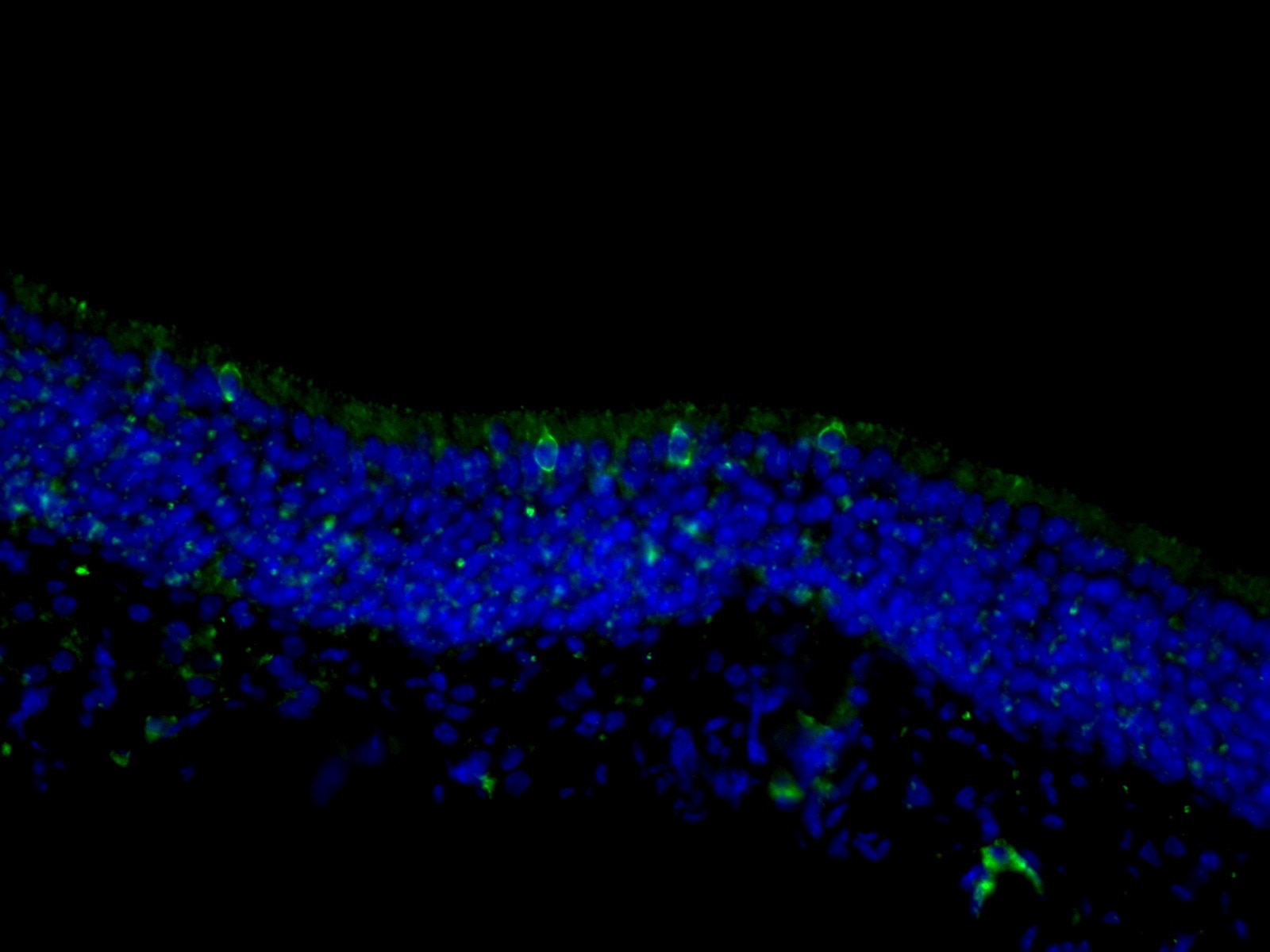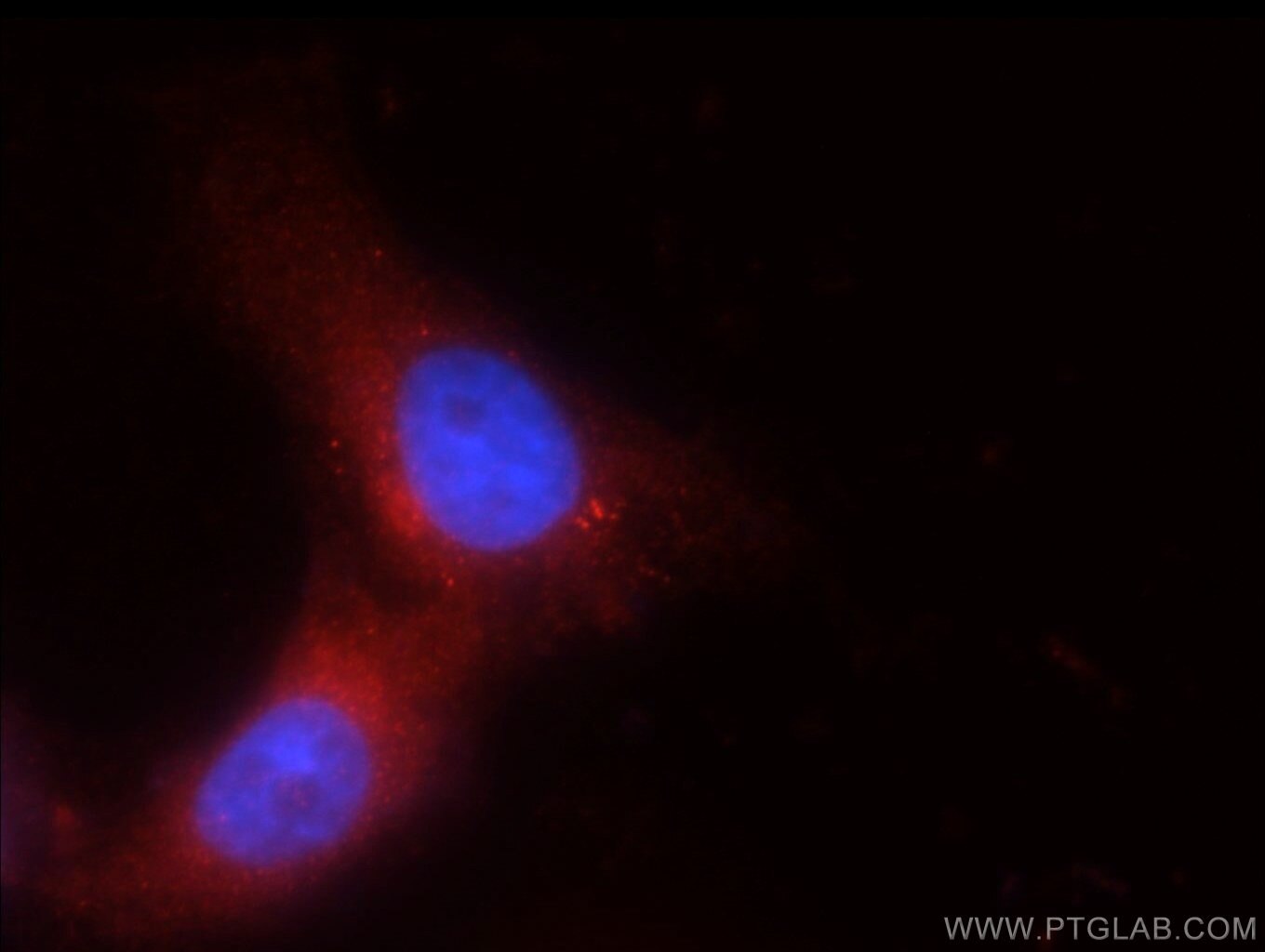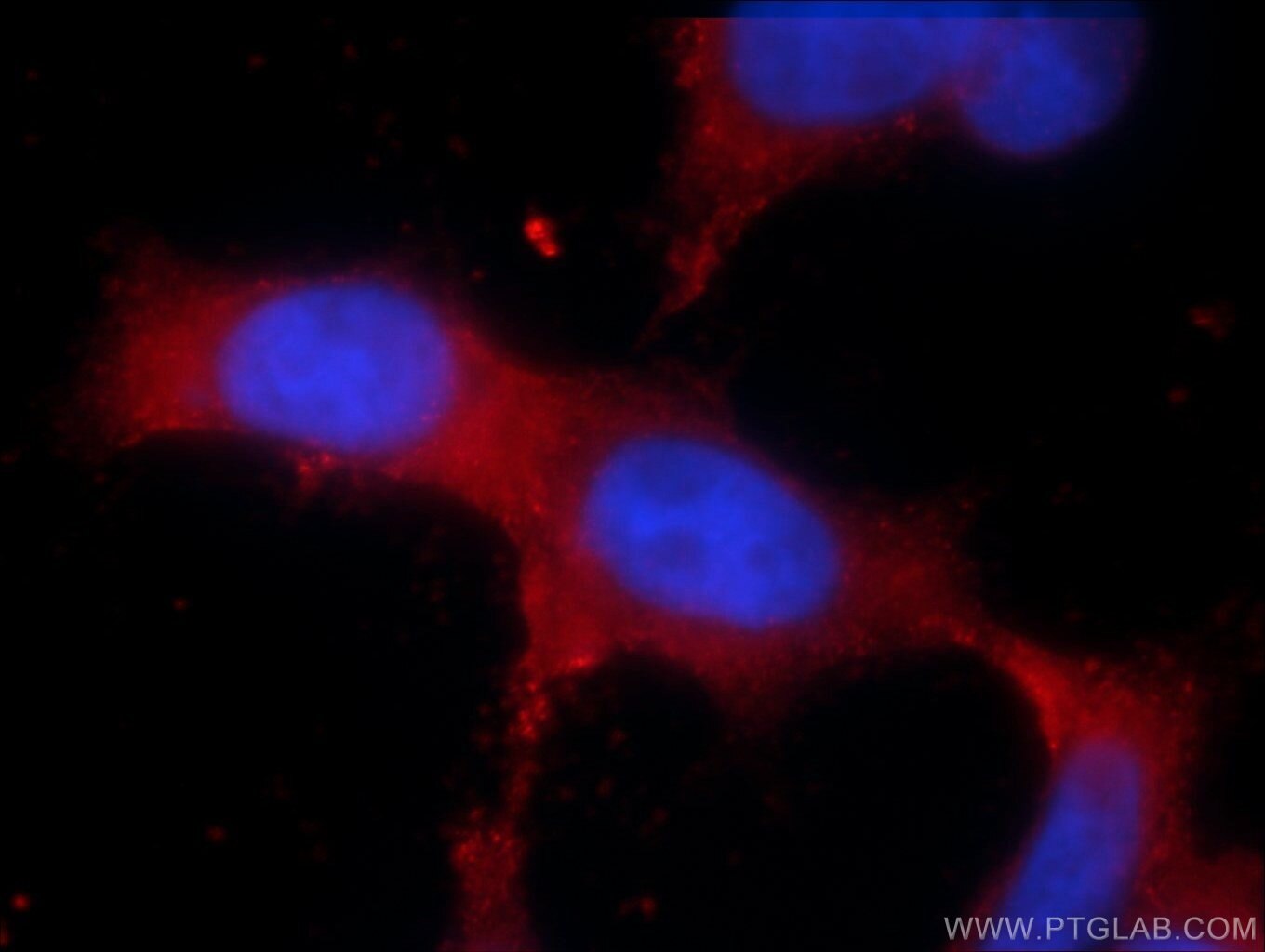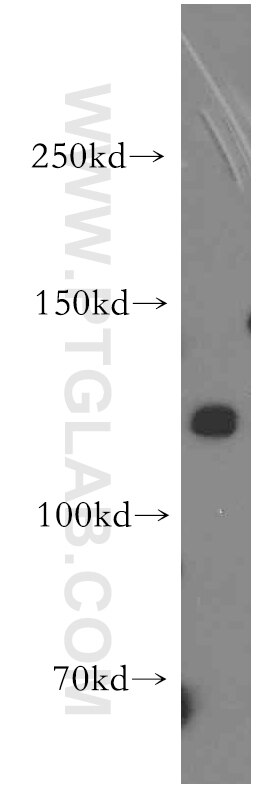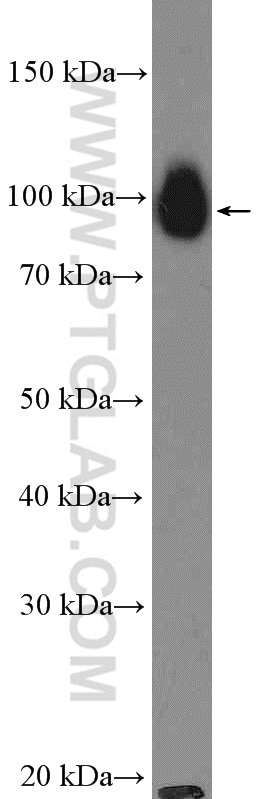- Featured Product
- KD/KO Validated
TRPM5 Polyclonal antibody
TRPM5 Polyclonal Antibody for WB, IF, IHC, ELISA
Host / Isotype
Rabbit / IgG
Reactivity
human, mouse, rat
Applications
WB, IF, IHC, ELISA
Conjugate
Unconjugated
Cat no : 18027-1-AP
Synonyms
Validation Data Gallery
Tested Applications
| Positive WB detected in | mouse liver tissue |
| Positive IHC detected in | human small intestine tissue Note: suggested antigen retrieval with TE buffer pH 9.0; (*) Alternatively, antigen retrieval may be performed with citrate buffer pH 6.0 |
| Positive IF detected in | mouse olfactory epithelium tissue |
Recommended dilution
| Application | Dilution |
|---|---|
| Western Blot (WB) | WB : 1:500-1:1000 |
| Immunohistochemistry (IHC) | IHC : 1:50-1:500 |
| Immunofluorescence (IF) | IF : 1:50-1:200 |
| It is recommended that this reagent should be titrated in each testing system to obtain optimal results. | |
| Sample-dependent, Check data in validation data gallery. | |
Published Applications
| KD/KO | See 1 publications below |
| WB | See 2 publications below |
| IF | See 2 publications below |
Product Information
18027-1-AP targets TRPM5 in WB, IF, IHC, ELISA applications and shows reactivity with human, mouse, rat samples.
| Tested Reactivity | human, mouse, rat |
| Cited Reactivity | human, mouse, rat |
| Host / Isotype | Rabbit / IgG |
| Class | Polyclonal |
| Type | Antibody |
| Immunogen | TRPM5 fusion protein Ag12593 |
| Full Name | transient receptor potential cation channel, subfamily M, member 5 |
| Calculated Molecular Weight | 98 kDa, 131 kDa |
| Observed Molecular Weight | 98 kDa |
| GenBank Accession Number | BC093787 |
| Gene Symbol | TRPM5 |
| Gene ID (NCBI) | 29850 |
| RRID | AB_2287825 |
| Conjugate | Unconjugated |
| Form | Liquid |
| Purification Method | Antigen affinity purification |
| Storage Buffer | PBS with 0.02% sodium azide and 50% glycerol pH 7.3. |
| Storage Conditions | Store at -20°C. Stable for one year after shipment. Aliquoting is unnecessary for -20oC storage. 20ul sizes contain 0.1% BSA. |
Background Information
Transient receptor potential (TRP) proteins are a diverse family of proteins with structural features typical of ion channels (PMID: 14634208). TRPM5 is a member of the TRPM (melastatin-like) subfamily which are Ca(2+)-permeable cation channels localized predominantly to the plasma membrane (PMID: 11864597). TRPM5 plays a central role in taste transduction (PMID: 17610722). TRPM5 is implicated in enhancing TRPA1 expression and may be involved in regulating insulin secretion (PMID: 21932052). Alternative splicing results in transcript variants encoding distinct isoforms with calculated molecular weights of 98 kDa or 131 kDa. It has been reported that TRPM5 is N-linked glycosylated at a unique site and TRPM5 glycosylation seems not to be involved in channel trafficking, but mainly in its functional regulation (PMID: 24605085).
Protocols
| Product Specific Protocols | |
|---|---|
| WB protocol for TRPM5 antibody 18027-1-AP | Download protocol |
| IHC protocol for TRPM5 antibody 18027-1-AP | Download protocol |
| Standard Protocols | |
|---|---|
| Click here to view our Standard Protocols |
Publications
| Species | Application | Title |
|---|---|---|
Immunity Intestinal Tuft-2 cells exert antimicrobial immunity via sensing bacterial metabolite N-undecanoylglycine. | ||
Food Funct Piperine, as a TAS2R14 agonist, stimulates the secretion of glucagon-like peptide-1 in the human enteroendocrine cell line Caco-2.
| ||
Appetite Chronic exposure to liquid sucrose and dry sucrose diet have differential effects on peripheral taste responses in female rats. | ||
Respir Res Human airway tuft cells influence the mucociliary clearance through cholinergic signalling |
